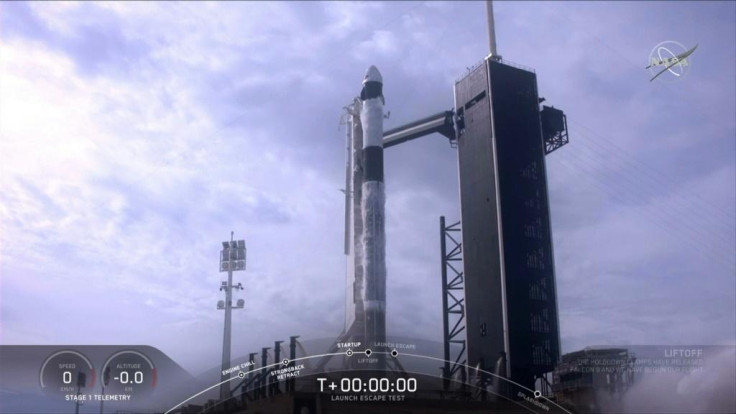Halloween SpaceX launch halted due to contamination of rocket engine, NASA says
According to investigations, the culprit is a red lacquer used by personnel to coat certain sections of the rocket during cleaning.
After successive successes with its missions in the past few months, SpaceX's Halloween launch was postponed due to an unexpected problem. According to the National Aeronautics and Space Administration (NASA), what prompted the move was an unexpected contaminant in the rocket engine following routine maintenance. The spacecraft was originally scheduled to ferry astronauts to the International Space Station, which would have been another major milestone for Elon Musk's space transportation services firm.
According to investigations, the culprit is a red lacquer used by personnel to coat certain sections of the rocket during cleaning. However, they found out that the material managed to get into the small vent holes in the engines, which could compromise the reliability of its performance, as reported by the Independent. Given the statistics surrounding launch failure rates, this was something that could not just be brushed aside.
If the Halloween launch of Crew-1 Mission proceeded according to plan, it would have been the first time that SpaceX would commercially carry NASA astronauts into orbit. Similar to the successful Crew Dragon mission earlier this year, the spacecraft would have eventually docked with the ISS. Due to the potential danger its presents, all operations have been ceased as the group plans to reschedule the launch to Nov. 14, which is a delay of about two weeks.
It appears those overseeing the project have taken the development as an opportunity to come up with revamped procedures to prevent a similar situation in the future. "The important part, I think, for us is that we caught it before anything happened," said SpaceX vice president Hans Koenigsmann. "Really important for us that we fix it ... and make sure that never happens again." The parts that were contaminated are vent holes found in the gas generators of the rocket engine and measure 1.6 mm each."
The problem was thankfully detected by the integrated safety systems during an Oct. 2, launch, which was automatically aborted. So far, this masking agent has been spotted on brand new boosters, while the older ones remain unaffected. However, after being used several times, SpaceX and NASA might have opted to go with the new components for its Halloween mission. Both groups did not disclose the name of the third-party company that services the equipment as of this writing.

© Copyright IBTimes 2025. All rights reserved.





















